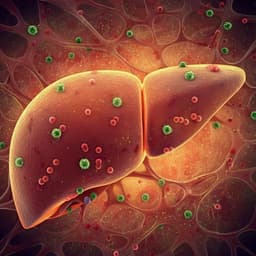
Medicine and Health
Associations of traditional healthy lifestyle and sleep quality with metabolic dysfunction-associated fatty liver disease: two population-based studies
J. Yang, Q. Zhang, et al.
This research conducted by Jialu Yang and colleagues delves into the intriguing link between traditional healthy lifestyles, sleep quality, and the progression of metabolic dysfunction-associated fatty liver disease (MAFLD). Utilizing data from the ISSCC and US NHANES studies, it introduces a novel metric, Liver Essential 5, highlighting how enhanced sleep significantly influences MAFLD risks. Discover how better sleep can pave the way for healthier living!
~3 min • Beginner • English
Related Publications
Explore these studies to deepen your understanding of the subject.







